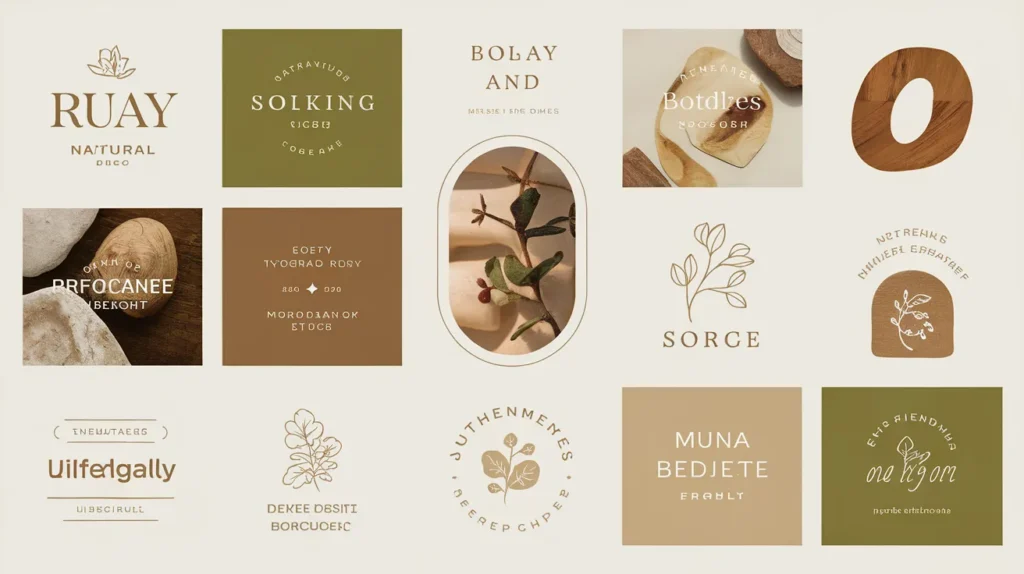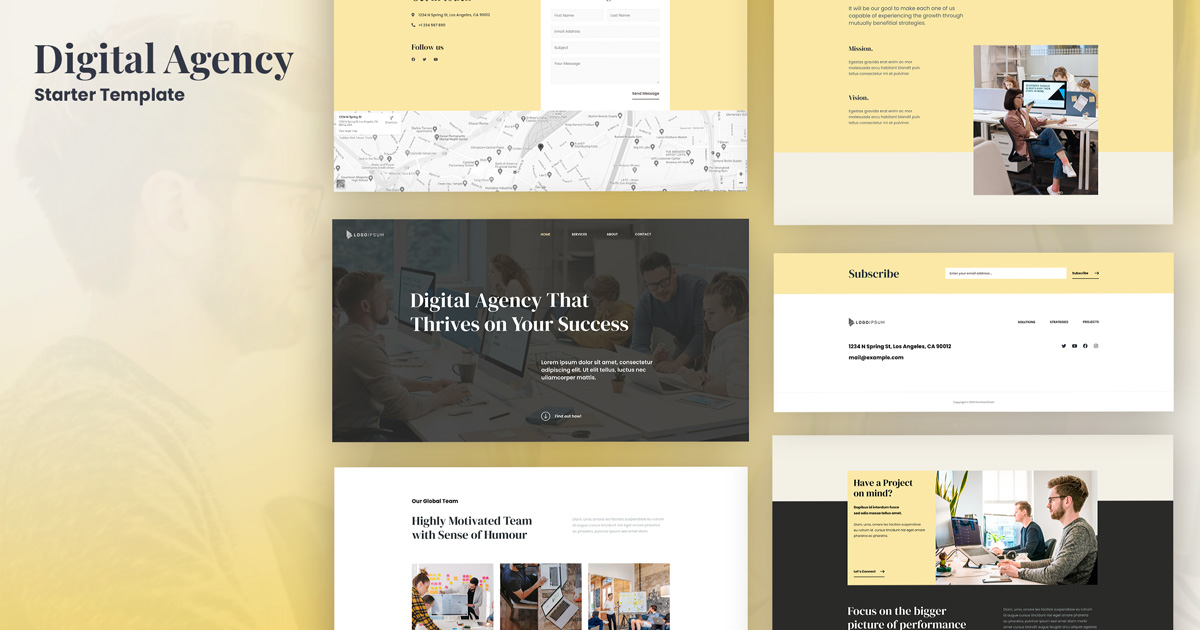As we approach 2025, the concept of natural brand design has become increasingly significant in the tech industry. This comprehensive guide explores the fundamental principles, current trends, implementation strategies, and best practices for natural brand design, with a particular focus on technology and digital products.
By integrating elements inspired by nature, companies can create more engaging, sustainable, and emotionally resonant brand experiences that align with evolving consumer values and expectations.
Fundamental Principles and Elements of Natural Brand Design
Color Palettes
Color plays a crucial role in natural brand design, influencing user experience and emotional responses. In 2025, the emphasis is on color palettes that evoke a sense of authenticity and connection to nature.
These palettes typically include:
- Earth tones: Warm browns, soft greens, and muted oranges
- Ocean-inspired blues: From deep navy to light turquoise
- Forest greens: Rich, vibrant greens reminiscent of lush vegetation
- Sunset hues: Soft pinks, purples, and oranges for accent colors

The psychology of color is a critical consideration, as different cultures may interpret colors differently. Designers must be mindful of these cultural nuances when creating global brand identities.
Typography
Typography in natural brand design focuses on simplicity, clarity, and approachability. The selection of fonts plays a significant role in conveying the brand’s personality and values
Key considerations include:
- Serif fonts: Often used to convey tradition, reliability, and sophistication
- Sans-serif fonts: Suggest modernity, simplicity, and clarity
- Organic typefaces: Custom fonts that mimic natural forms or handwriting
- Readability: Ensuring legibility across various digital platforms and devices
Designers should aim for a balance between uniqueness and functionality, creating typography that stands out while remaining easily readable in different contexts.
Visual Elements
Visual elements in natural brand design draw inspiration from organic forms and patterns found in nature. These elements help create a cohesive and engaging brand identity that resonates with audiences seeking authenticity and sustainability
Key components include:
- Shapes and Proportions: Utilize geometric and organic shapes to create balance and harmony. Natural shapes can evoke feelings of stability and comfort.
- Textures: Incorporate textures that mimic natural materials like wood, stone, or leaves to enhance the tactile quality of digital designs.
- Imagery: Use photographs or illustrations featuring natural landscapes, flora, and fauna to strengthen the connection to nature 5.
Design Principles
The application of fundamental design principles ensures that visual elements work together harmoniously:
- Balance: Distribute elements evenly to create a sense of stability and visual comfort.
- Contrast: Use contrast to highlight important elements and ensure readability.
- Hierarchy: Establish a clear visual hierarchy through size, color, and placement to guide the viewer’s attention.
- Repetition: Repeat design elements to create a cohesive and unified brand identity 6.
Current Trends in Natural Brand Design for Technology and Digital Products
Organic and Naturalistic Design Elements
Natural brand design increasingly incorporates elements inspired by nature, such as organic shapes, natural textures, and earthy color palettes.
This approach resonates with eco-conscious audiences and brings a sense of balance and authenticity to digital products.
Sustainability and Eco-Consciousness
As sustainability becomes a core value for many consumers, tech companies are incorporating natural design elements to emphasize their commitment to environmental responsibility.
This trend goes beyond aesthetics, aligning brand values with consumer expectations for sustainability and mindfulness.
Emotional Connection through Design
Building an emotional connection with users is vital for loyalty and advocacy. Natural brand design achieves this by incorporating micro-interactions and community-building efforts that engage users on a deeper level, fostering a sense of trust and reliability.
Adaptability and Innovation
The fast-paced nature of the tech industry requires brands to be adaptable. Natural brand design should be flexible enough to evolve with technological advancements while maintaining its core identity. This adaptability ensures that the brand remains relevant and engaging over time.
Implementation Strategies and Frameworks
Assessment and Planning
Begin with a thorough evaluation of the current brand situation, including an audit of existing brand assets and customer perceptions. Identify gaps and opportunities for incorporating natural elements into the brand design.
This stage is crucial for setting a clear direction and ensuring that the natural brand design aligns with the company’s core values and market positioning.
Development of Brand Assets
Create or update the brand’s visual and verbal identity to reflect natural design principles. This includes:
- Selecting color palettes that mimic natural hues
- Choosing typography that feels organic and approachable
- Developing visual elements that draw inspiration from nature
Ensure consistency across all touchpoints to create a cohesive brand identity.
Internal Alignment
Engage and train employees to understand and embody the natural brand design. Employees should be aware of the brand’s values and how they translate into everyday interactions with customers. This internal alignment is essential for maintaining consistency and authenticity in brand representation.
Rollout and Execution
Implement the natural brand design across all platforms, including:
- Digital interfaces
- Marketing materials
- Product packaging
- Physical spaces (if applicable)
Consistency is key to ensuring that the brand’s natural elements are effectively communicated to the audience.
Monitoring and Evaluation
Continuously monitor the brand’s performance and gather feedback to make necessary adjustments. This ongoing process helps in refining the brand design to better meet customer expectations and enhance engagement.
Tools and Resources for Creating Natural Brand Design Systems
Design Software
- Figma: A cloud-based design platform for creating and maintaining design systems.
- Storybook: An open-source tool for building UI components in isolation.
- Chromatic: Automates UI feedback gathering, visual testing, and documentation for Storybook.
Design System Platforms
- Zeroheight: Acts as a central hub for designers, engineers, and product teams to engage with the design system.
- Material-UI (MUI): A CSS framework providing ready-to-use React components following Google’s Material Design.
- Tailwind CSS: A utility-first CSS framework for creating custom components without writing custom classes or code.
Design System Examples and Libraries
- Google Material Design, Microsoft Fluent Design, and IBM Carbon Design System: Provide valuable insights into successful design system structures.
- Design Systems For Figma: Offers a repository of freely available Figma kits of design systems.
Case Studies: Successful Implementation of Natural Brand Design
Mailchimp’s Rebranding
Mailchimp’s rebranding process, executed by Collins, focused on simplicity and ease of management. The rebrand emphasized a single primary color and typographic style, aligning with natural brand design principles by prioritizing simplicity and clarity.
Uber’s Rebranding
Uber’s 2018 rebranding, facilitated by Wolff Olins and type designer Jeremy Mickel, aimed to rebuild trust and appeal to a broader audience.
The rebrand focused on creating a clean and trustworthy visual identity, demonstrating how natural brand design principles can be used to communicate reliability and regain customer trust.
Typeform’s Human-Centric Design
Typeform’s rebranding focused on making forms more engaging and human-centric. The new visuals were designed to evoke emotional empathy and distinguish the brand from competitors.
This approach highlights the importance of user-centric design in tech branding, a core aspect of natural brand design.
Conclusion
As we move towards 2025, natural brand design has become an essential strategy for tech companies looking to create authentic, sustainable, and emotionally resonant brand experiences. By incorporating elements inspired by nature, such as organic color palettes, approachable typography, and naturalistic visual elements, brands can effectively communicate their values and connect with their target audience on a deeper level.
The implementation of natural brand design requires a strategic approach that combines brand implementation best practices with sustainable design frameworks. By aligning their brand with nature-inspired principles, tech companies can create a compelling and sustainable brand identity that stands out in the competitive market and resonates with the growing consumer demand for authenticity and environmental responsibility.



